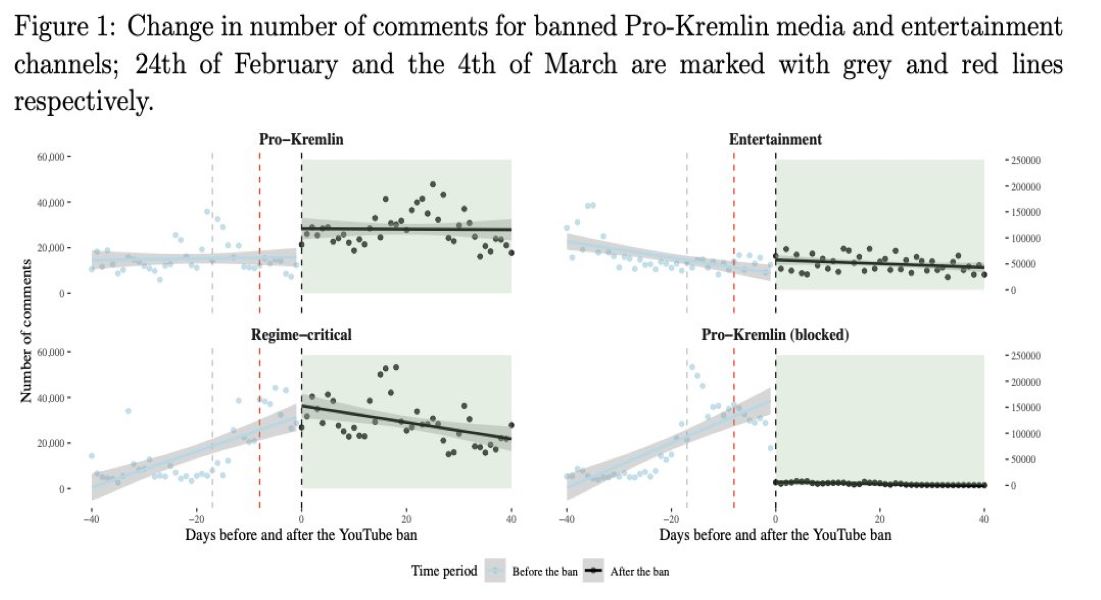New data memo on YouTubes ban of Russian state media

In March, YouTube announced a global ban on RU state media partly to halt disinformation. Same month, RU passed a law giving up to 15 years in prison for spreading "disinformation" about the war. Researchers at SODAS and Political Science at KU analyzed 12.3 million YouTube comments to understand these events. The data memo is written by Kristina Aleksandrovna Pedersen, Jonas Skjold Raaschou-Pedersen, Anna Rogers and Yevgeniy Golovchenko. The researchers collected comments tied to 13,950 videos from 40 prominent channels in Russian: 10 pro-Kremlin media YouTube channels banned by YouTube *globally*, 10 pro-Kremlin channels that were non-banned, 10 entertainment channels (not tied to politics directly) and 10 channels critical towards the RU government.
The data memo examines whether YouTubes ban on RU state-controlled media worked, and shows how there indeed was a sudden decline in number of comments on the banned pro-Kremlin channels, but that that this decline might have spurred a rise in comments on non-banned pro-Kremlin channels.
Tech firms are often criticized for lack of transparency about what they do. This study shows that YouTube actually did what they promised and that they were effective in curbing online engagement for some of the most important RU state-controlled media - based on the data presented in the data memo. However, the researchers also show the challenges of policing social media, especially if the ban is not complete. The researchers suspect that some of the users simply moved from the banned pro-Kremlin channels to non-banned pro-Kremlin channels. This doesn't mean that the ban isn't effective overall, since the net-result is still unknown. The professionalized news media in the data is down, and it's possible that the pro-Kremlin media environment (as a whole) is still disrupted despite of the potential user migration.
The four researchers are working on improving the data memo and evolving it into a longer research article. The current version is available online, where you can also find a Github link for the code (R, Python) used for downloading and analyzing the data.
